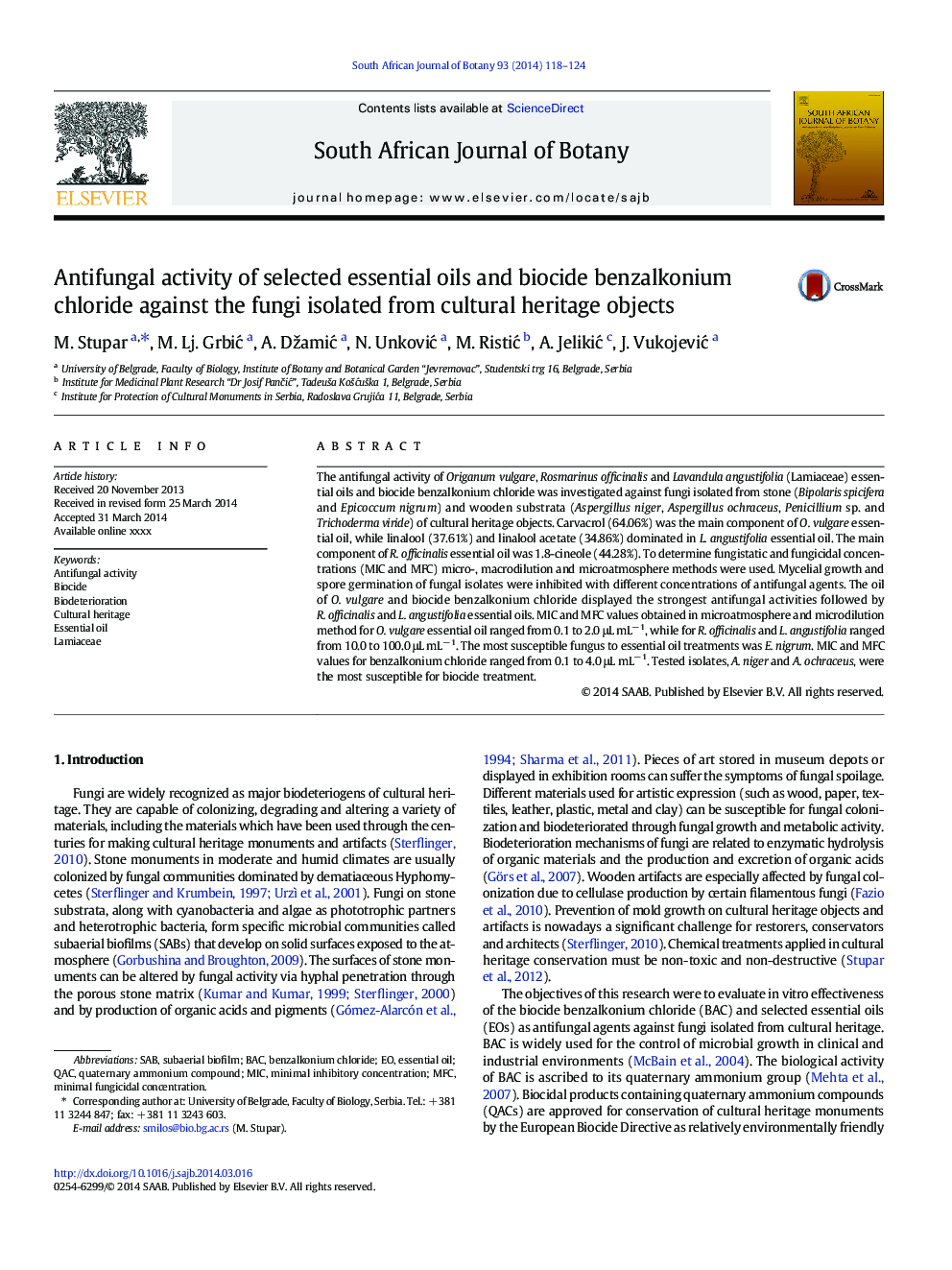| Article ID | Journal | Published Year | Pages | File Type |
|---|---|---|---|---|
| 6378927 | South African Journal of Botany | 2014 | 7 Pages |
Abstract
The antifungal activity of Origanum vulgare, Rosmarinus officinalis and Lavandula angustifolia (Lamiaceae) essential oils and biocide benzalkonium chloride was investigated against fungi isolated from stone (Bipolaris spicifera and Epicoccum nigrum) and wooden substrata (Aspergillus niger, Aspergillus ochraceus, Penicillium sp. and Trichoderma viride) of cultural heritage objects. Carvacrol (64.06%) was the main component of O. vulgare essential oil, while linalool (37.61%) and linalool acetate (34.86%) dominated in L. angustifolia essential oil. The main component of R. officinalis essential oil was 1.8-cineole (44.28%). To determine fungistatic and fungicidal concentrations (MIC and MFC) micro-, macrodilution and microatmosphere methods were used. Mycelial growth and spore germination of fungal isolates were inhibited with different concentrations of antifungal agents. The oil of O. vulgare and biocide benzalkonium chloride displayed the strongest antifungal activities followed by R. officinalis and L. angustifolia essential oils. MIC and MFC values obtained in microatmosphere and microdilution method for O. vulgare essential oil ranged from 0.1 to 2.0 μL mLâ 1, while for R. officinalis and L. angustifolia ranged from 10.0 to 100.0 μL mLâ 1. The most susceptible fungus to essential oil treatments was E. nigrum. MIC and MFC values for benzalkonium chloride ranged from 0.1 to 4.0 μL mLâ 1. Tested isolates, A. niger and A. ochraceus, were the most susceptible for biocide treatment.
Keywords
Related Topics
Life Sciences
Agricultural and Biological Sciences
Agronomy and Crop Science
Authors
M. Stupar, M. Lj. GrbiÄ, A. DžamiÄ, N. UnkoviÄ, M. RistiÄ, A. JelikiÄ, J. VukojeviÄ,
